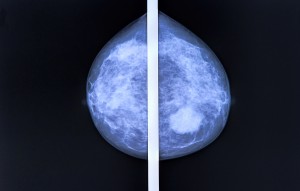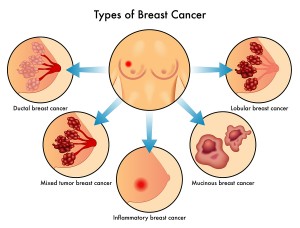Diagnosing breast cancer accurately has been a goal for many years. Unfortunately this is a complex problem as breast cancer often does not only develop in one breast. Not infrequently breast cancer develops simultaneously within the same breast in several spots or even in both breasts. Breast cancer often metastasizes early into lymph glands. It also can send out distant metastases. The physician detects these only thorough whole body scan. This includes a PRT scan that looks for metastases in the whole body. Although this is desirable, it is not always practical in any case due to prohibitive costs. With this in mind, let us review the standard screening methods. It starts with breast self examination. If you find anything that is different from before, see you physician right away.
Mammography
How successful is mammography in reducing breast cancer mortality? Mammography screening is very successful, as shown in follow-up studies. There was a reduction in breast cancer mortality of 25% because of mammography screening. Furthermore, when the radiologist identified lesions as suspicious by mammography, the surgeon removed them. Histological examination confirmed that they were cancerous. The success rate was between 15% and 30%. This is considered a very successful outcome, particularly as some of the benign lesions removed might in future also have turned cancerous.
Digital mammography
For women with dense breasts such as women with fibrocystic disease or women with rather large breasts and dense breast tissue an alternative investigation tool has been developed, called “digital mammography”. I described it in this blog.
MRI breast scan
A study in 2007 found that 1 in 10 women with breast cancer in one breast were found to have breast cancer also in the opposite breast. This underlies what i said above, namely that one has to be cognizant of the fact that breast cancer does not always just start in one breast. More about this study in this blog.
A review in the November 2014 issue of the Life Extension magazine suggested that some form of combination of mammography and of MRI scanning may be the safest screening method for breast cancer: https://nethealthbook.com/news/alternative-mammography-screening-breast-cancer/
PET/CT scan for inflammatory breast cancer
In the case of inflammatory breast cancer a study at the University of Texas M.D.Anderson Cancer Center in Houston revealed the importance of early PET/CT scan studies to pinpoint the stage of the cancer prior to treatment for optimal results. See details in this blog.
Thermograms
Thermograms of the breasts depict changes in surface temperature over the breast tissue, but do not penetrate deeper into the breast tissue. In combination with conventional mammograms they may add some clinical information, but by themselves breast mammograms are not reliable. See this link for more information.
Connection between calcification of breast arteries and heart disease
At a meeting of radiologists in April of 2015 in Toronto, Canada research regarding a correlation of calcifications of breast arteries and calcifications of coronary arteries was reported. This means that women with breast cancer are at a higher risk of developing heart disease and women who have heart disease are at a higher risk of developing breast cancer.








